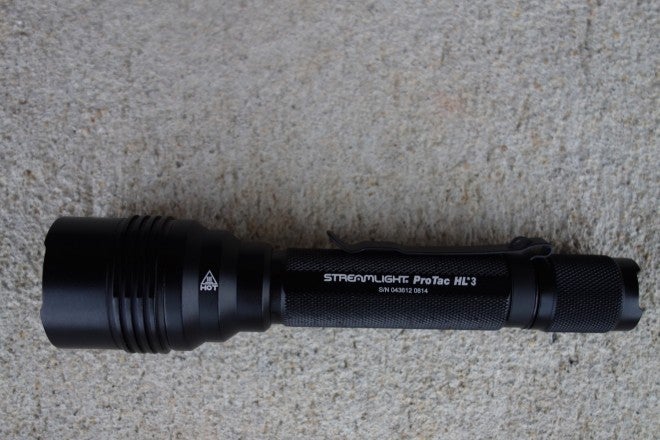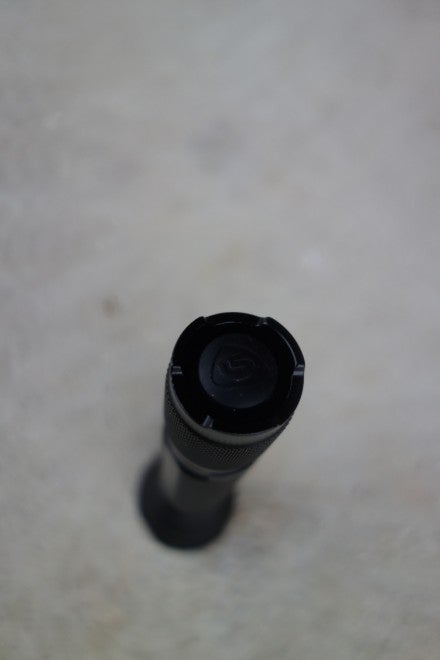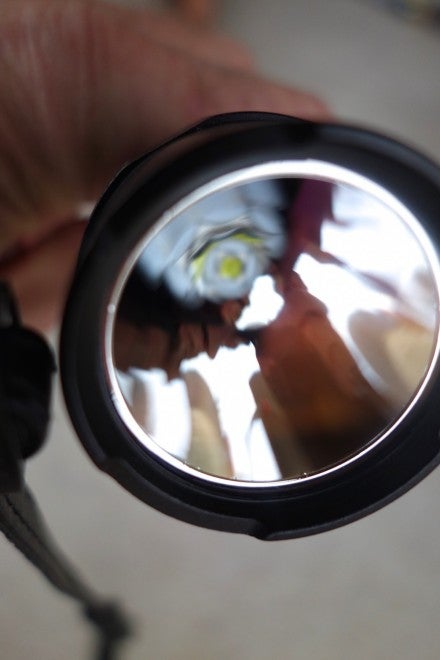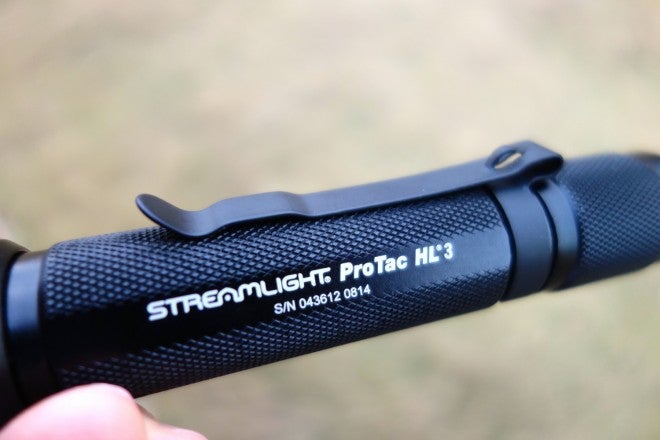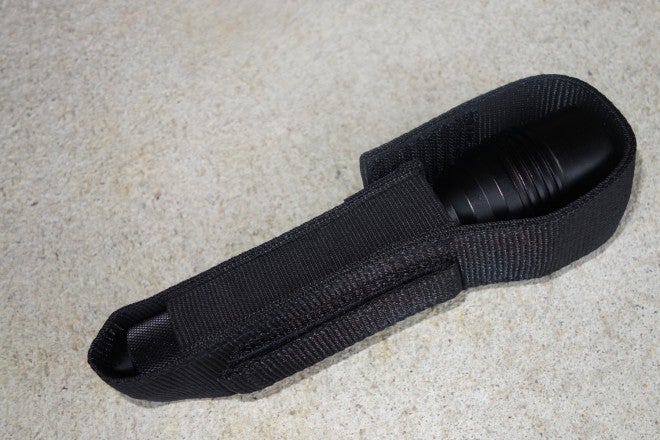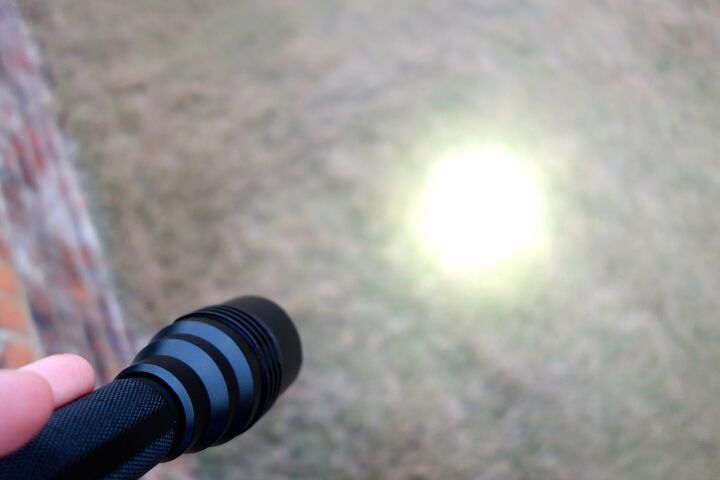For your consideration is the Streamlight ProTac HL®3 flashlight. This is one “beast” of a bright light at a rated 1100 lumen. Based upon the readings from my integrating sphere, the light makes good on the lumen claim, at least at initial turn on with fresh batteries.
Features / specs (taken from the Streamlight web site):
- C4® LED technology, impervious to shock with a 50,000 hour lifetime
- TEN-TAP® Programming – Choice of three user selectable programs:
- 1) high/strobe/low; 2) high only; 3) low/high
- High for maximum illumination: 1,100 lumens; 36,000 candela; runs 1.5 hours
- Low a less intense beam and longer run time: 35 lumens; 1,200 candela; runs 36 hours
- Strobe for disorienting or signaling: runs 1.5 hours
- Multi-function, push-button tail switch for one-handed operation
- Optimized electronics provides thermal management and regulated intensity
- Solid State power regulation provides maximum light output throughout battery life
- Durable anodized machined aircraft aluminum construction
- Anti-roll head prevents the light from rolling away when you set it down
- Removable pocket clip
- O-ring sealed glass lens
- IPX7; waterproof to 1 meter for 30 minutes; 1 meter impact resistance tested
- Includes three 3V CR123A lithium batteries and nylon holster
- 10 in. (18.03 cm); 9.3 oz. (263 grams) with batteries
- RoHS compliant
- Limited lifetime warranty
As mentioned, the light includes 3 Duracell CR123 lithium batteries. I have used rechargeable “123” (16340) cells for years and prefer them, but the product instructions plainly state to not use such cells. We assume that the light is not designed to handle more than 9V.
I did try 2 AW brand 17500 cells (fully charged these two batteries combine for 8.4V) and they fit perfectly and operated the light just fine. I am not saying it’s okay – not suggesting you do it – just telling you that I did experiment and it did work. If you buy one of these and ‘poof’ your light, then I doubt that Streamlight would honor a warranty claim. You probably should stick to “primary” lithium batteries.
This is not a small light, but it’s smaller than the ubiquitous MagLite. It would serve well as a duty light.
The clicky switch has a firm, tactile ‘feel’ that was the way I like one to be.
Large head and smooth reflector coupled with the LED combines for a long throwing beam with a decent amount of side spill for peripheral lighting.
As mentioned in the specs, this light can be set to one of the available 3 programs using the “ten tap” method. From the “off” position, you tap the switch 9 times then “hold” it on the 10th tap until the light switches off. That action advances you to the next of the 3 programs. Factory default is “High-Strobe-Low”…the next program is “High Only” and the 3rd position is “Low-High”.
There is a nice, long clip that can be removed by the user.
It also comes with a nice ballistic nylon holster.
Streamlight discusses their LED quite a bit on their site – it is designated “C4” by Streamlight, and I have not run across that designation from any other manufacturer. The LED emits a mostly white tint light with just a hint of a green tint when shone on a white wall. That probably does not matter to most people, but I thought I would mention it anyway!
The Streamlight HL3 has a list price of $155. A quick search of the web reveals that it can be purchased for around $90 at many well-known web retailers.
 Your Privacy Choices
Your Privacy Choices
